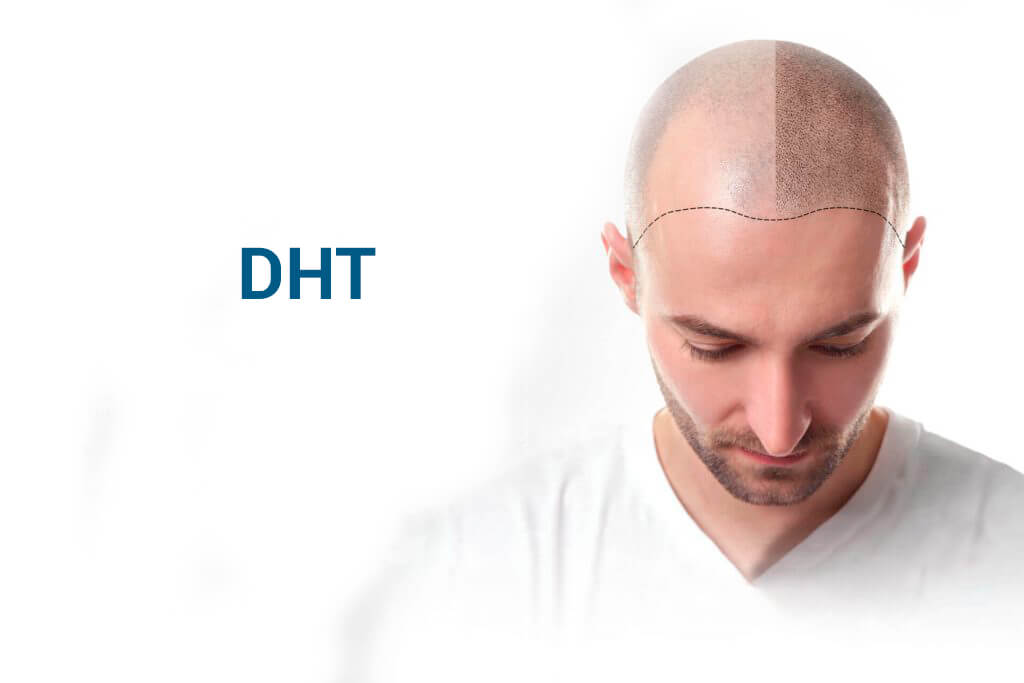DIHYDROTESTOSTERONE
There are different types of baldness and each of them, in turn, can be caused by multiple factors. One of these would be hormonal alterations, and in this, dihydrotestosterone or DHT has a lot to do with it, which we will describe below.
What is dihydrotestosterone?
Dihydrotestosterone or androstanolone, whose abbreviated chemical name is 5alpha-dihybrotestosterone, is an androgen, i.e. one of the male sex hormones. Specifically, it is an active metabolite of testosterone, the main male hormone.
Do you want to get your hair back? We have the perfect solution for you!
Characteristics dihydrotestosterone
Of dihydrotestosterone we can say that:
- It is a molecule that is synthesised in areas as diverse as the prostate, the adrenal capsules, the testicles or, as we are interested in, the hair follicles.
- This synthesis is carried out by an enzyme known as 5alpha-reductase.
- It is converted to 3alpha-androstanediol and 3beta-androstanediol.
- As well as being related to baldness, as we have already mentioned and will develop below, it develops and makes prostate hyperplasia and prostate cancer more exaggerated and evident.
How dihydrotestosterone-induced baldness occurs
This androgen is the cause of androgenetic or androgenic baldness in both men and women, although it is true that in the latter case it is produced as a consequence of the emergence of androgynous male sexual characteristics (deeper voice, growth and darkening of facial hair, etc.).
What happens is that DHT is converted by the enzyme 5alpha-reductase. This means that the membranes in the scalp become stiffer, resulting in saturation of the follicle structure, which then receives less blood flow and therefore less oxygen and other nutrients. The result is increasingly weaker, thinner and generally less healthy looking hair. As a result, the follicle eventually atrophies and therefore no longer fulfils the conditions necessary for hair growth, so that when the hair falls out, no new hair will grow from the follicle. This phenomenon is known as miniaturisation.
Of course, it is interesting to know that it is not a higher level of DHT that causes hair loss, but the individual's sensitivity to this androgen.
Dihydrotestosterone treatment
What is done in relation to dihydrotestosterone is to inhibit it both in the case of suffering benign prostatic hyperplasia or androgenetic alopecia, which is the pathology that involves us.
There are two main inhibitors: finasteride and dutasteride. The latter is only used for the pancreatic problem while the former is prescribed to treat hormonal androgenic hair loss.
This anti-androgenic drug is used, as mentioned above, to treat androgenetic alopecia (which ends in what is known as Hippocratic baldness). It is administered in doses of 1 mg for men but is not recommended for women.
